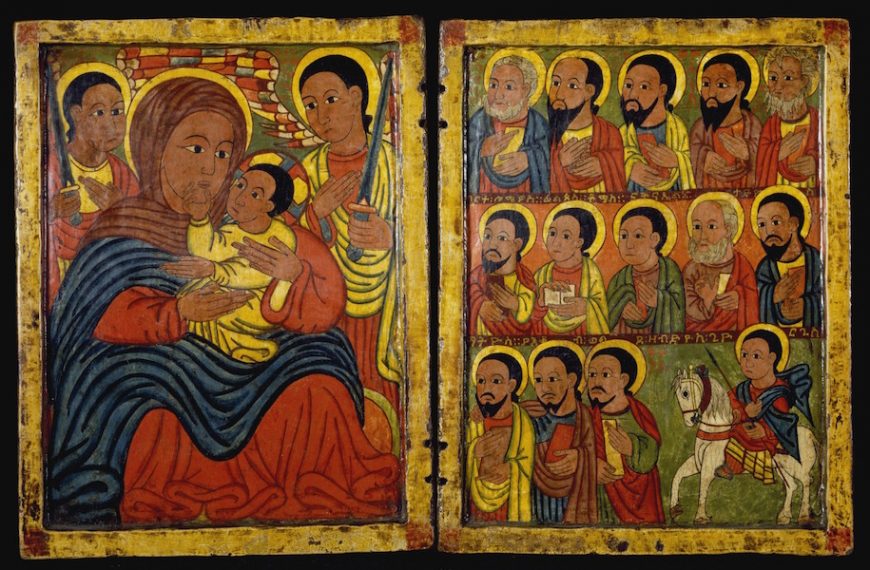
Diptych with Mary and Her Son Flanked by Archangels, Apostles and a Saint, Ethiopia, 15th century, tempera on wood, left panel: 8 7/8 x 7 13/16 x 5/8 inches (The Walters Art Museum)
The term icon is used to refer to a devotional image. It is typically painted on a flat wooden panel, although in Ethiopia, as in other traditions, materials such as metal or stone could also be used to produce this type of image. The earliest known Ethiopian icons have been dated to the fifteenth century and are generally painted with tempera on gesso-primed wooden panels. Ethiopian icons from this period typically portray the Virgin and Child, the Apostles, and Saint George.
The piece shown here, which can be dated tentatively to the second half of the fifteenth century, features precisely such a combination of subjects. On the left panel, the Child touches his Mother’s chin, a gesture of tenderness which appears more frequently in works from this period onwards. The central pair is flanked by two angels with unsheathed swords who act as their royal guard.
The right panel is decorated with portraits of the Apostles who turn their gaze in adoration towards the Virgin and Child. In the bottom right corner is a representation of Saint George on horseback. The names of several of the figures on the right panel have been written on the borders which divide the scene into registers. It is likely that inscriptions identifying the upper row of Apostles and the Virgin and Child were originally present on the upper frame of the two panels. Icons such as this were most likely created to encourage devotion towards the Virgin Mary in accordance with the wishes of the Ethiopian emperor Zarʾa Yaʿ ǝqob (who ruled from 1434–68) and would have been used in churches and in religious processions.
Additional resources:
Jacopo Gnisci, “A Fifteenth-Century Ethiopian Icon of the Virgin and Child by the Master of the Amber-Spotted Tunic,” Rassegna di Studi Etiopici, vol. 65 (2019), pp. 183–93.
Marilyn E. Heldman, The Marian Icons of the Painter Frē Ṣeyon: A Study in Fifteenth-Century Ethiopian Art, Patronage, and Spirituality (Wiesbaden: Harrassowitz Verlag, 1994).

